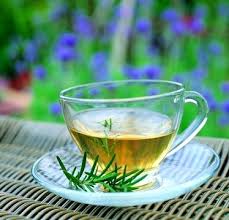Tea,
- Helps prevent gum disease, plaque buildup, bad breath & cavities (tea contains fluoride)
- Boosts the immune system, resists infections
- Reduces risk of breast cancer & prevents other cancers
- Lowers the risk of heart disease
- Lowers bad cholesterol and increases good cholesterol (HDL) plus prevents the oxidation of LDL cholesterol (reduce the buildup of plaque in arteries)
- Helps with weight loss, raises the metabolic rate, burns calories and speeds up fat oxidation
- Helps fight against Alzheimer’s and Parkinson’s
- A great way to stay hydrated and meet the daily water intake requirements
Tea isn’t meant to replace fruits or vegetables, but tea leaves contain more antioxidants than many antioxidant rich produce. The antioxidant activity in two cups of tea is equal to seven glasses of orange juice, five medium-sized onions or four medium-sized app les.
les.
There are plenty of studies done that suggest many more benefits of drinking green tea daily, you can do some research online for more information.
The plant Camellia sinensis is where tea comes from and it’s made into four different kinds of tea: Black Tea, Oolong Tea, Green Tea and White Tea. Although they all come from the same plant, each tea is different in flavor, aroma and color. This is mainly due to how the leaves are prepared.
Black Tea (fermented)
- Yields a hearty and more pronounced flavor of tea
- Has higher caffeine content
- This is the most popular type of tea and one that you’re probably most familiar with
- Black tea is a reddish-orange color
Oolong Tea (semi-fermented)
- This tea is pronounced as “woolong”
- The flavor and caffeine content is between the black tea and the green tea
- Oolong tea is a light brown tea with delicate flavor
Green Tea (unfermented)
- Goes through less processing than the other varieties of tea above, therefore it has more health benefits
- Produces a tea that is pale greenish or yellow in color
White Tea (unfermented)
- This is the purest form of tea since it undergoes the least amount of processing
- Contains the most amount of anti-oxidants
- Contains the least amount of caffeine
- This tea is handpicked in early spring, making it limited in quantity
Each of the four types of teas are separated by leaf quality, region they were grown in, how it’s harvested and may be flavored with oils or herbal blends–each giving a different taste experience. That’s why you’ll find many different varieties of Green Tea, White Tea, Oolong and Black Tea. It’s quite an adventure to sample all the different teas available!
Herbal teas are an infusion made from ingredients other than the Camellia sinensis plant. They’re made from herbs and plants (such as mint or chamomile). Although the benefits of drinking herbal teas are different than green teas, you’ll still find drinking herbal tea a good choice.Rooibos Tea
Rooibos tea is gaining in popularity as a beneficial beverage with health qualities compared to green tea, but it’s not a true tea since it doesn’t use leaves from the Camellia consensus plant and comes from the South African shrub Aspalathus linearis.
- Is reported to dissolve and prevent cholesterol buildup (preventing heart disease)
- High in vitamins, minerals, antioxidants
- Contains no caffeine
- Is favored as both a hot and cold drink
- Low in tannin
- Is pronounced as “RoyBoss”




0 comments on ""Green" Tea"
Post a Comment